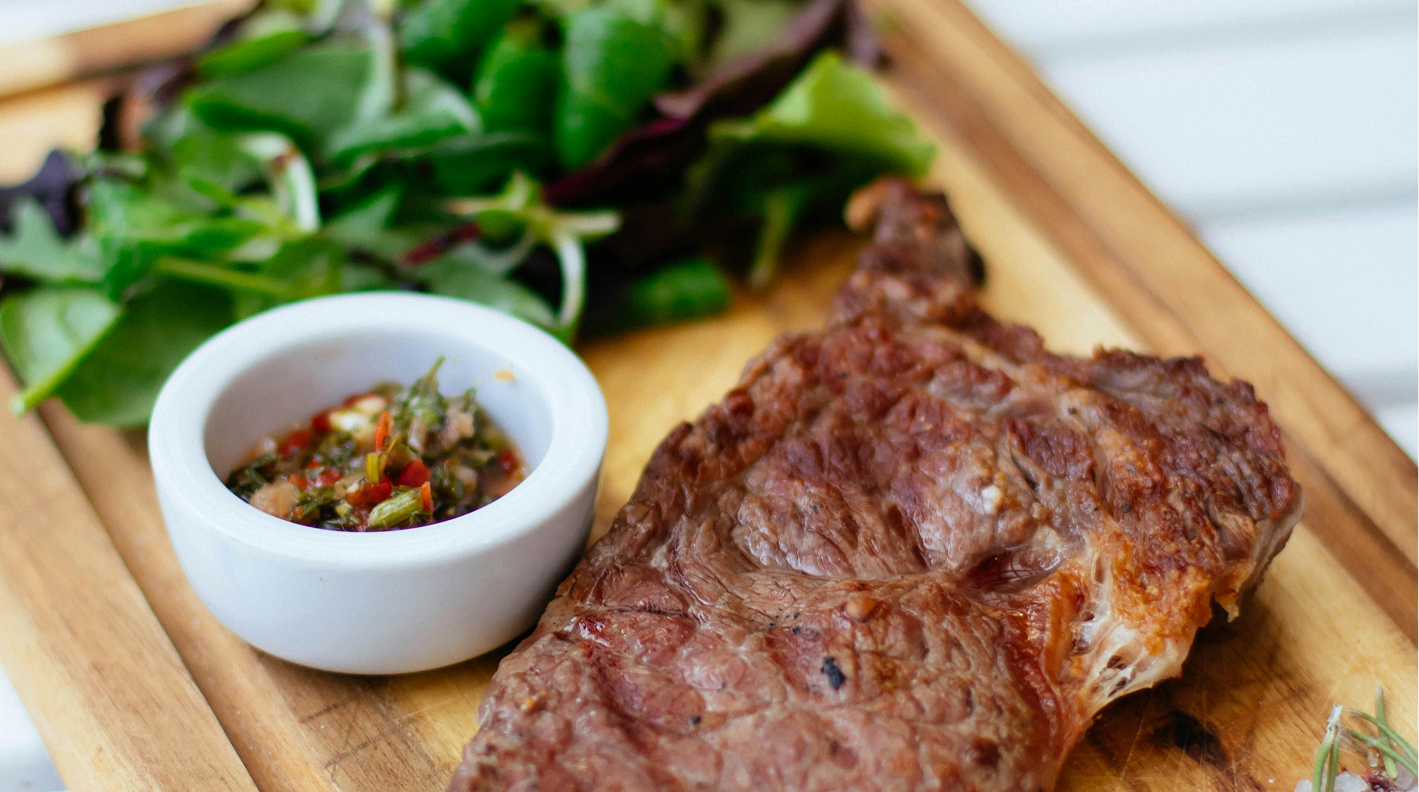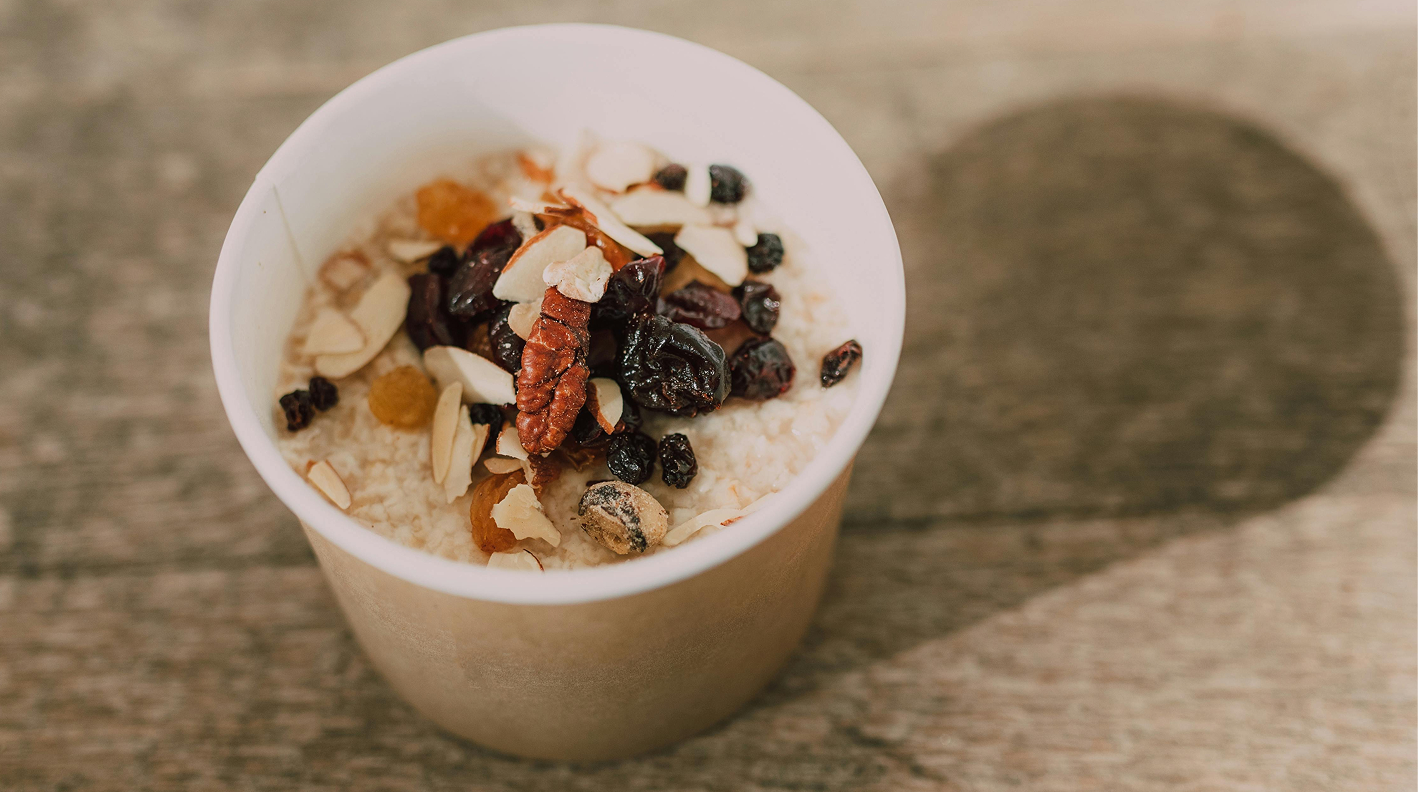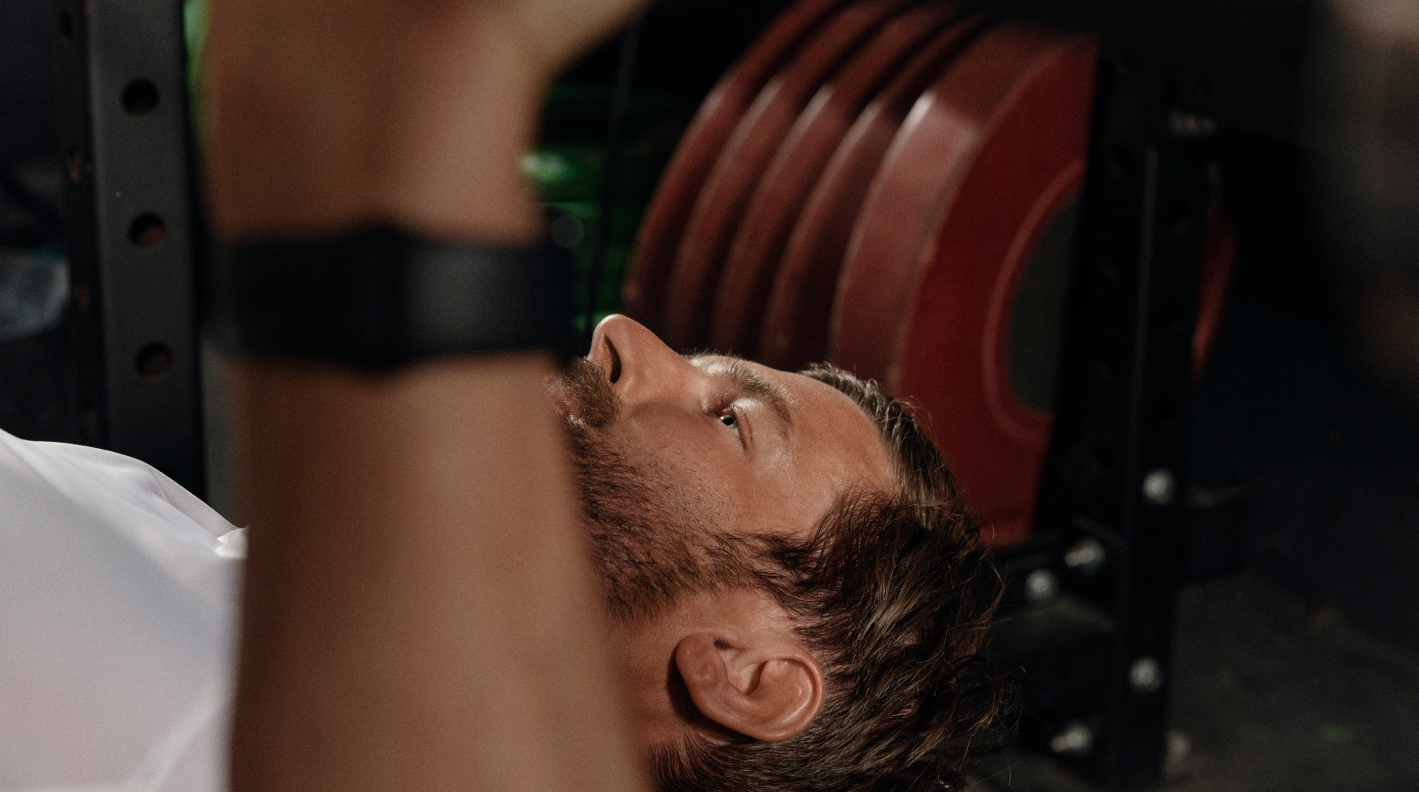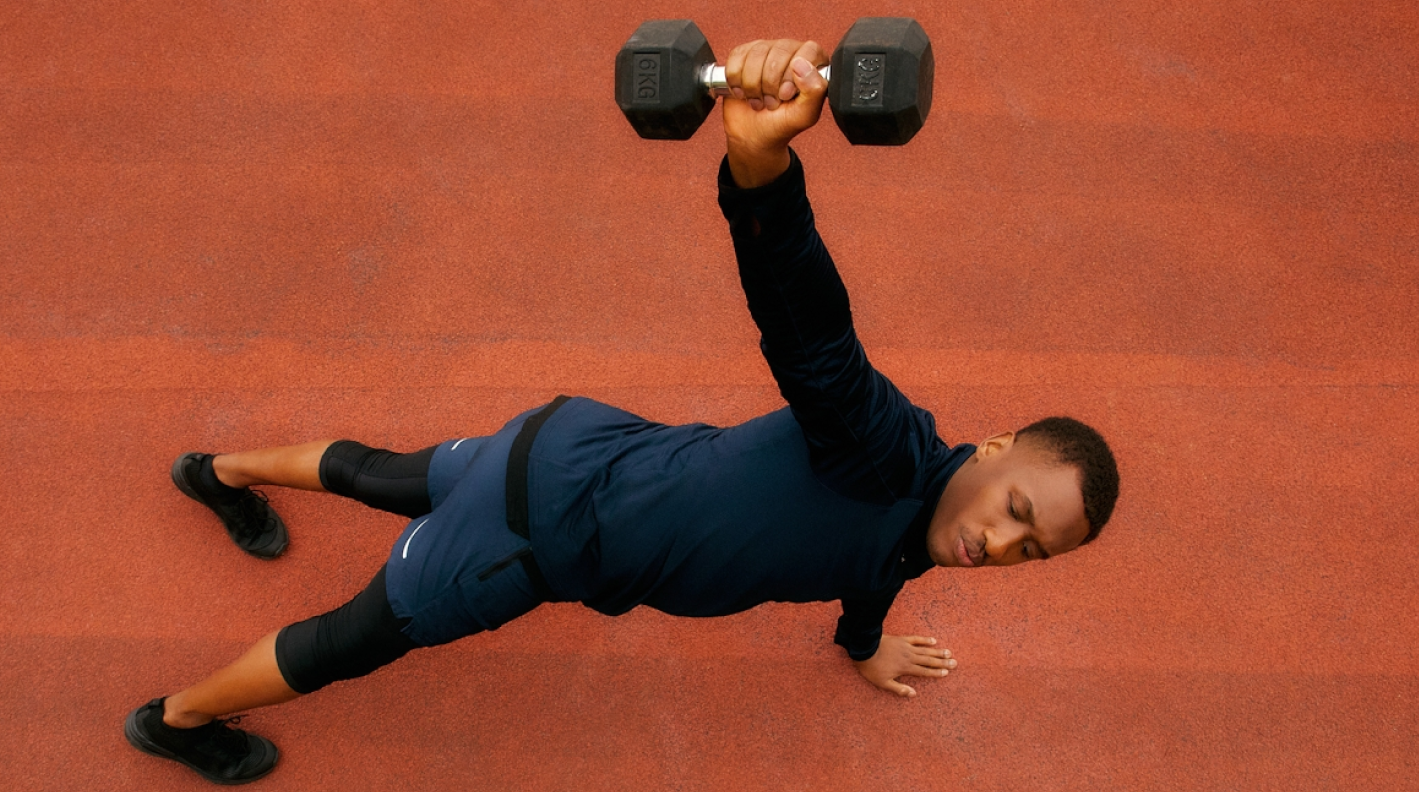Working out when sore: Is it safe or should you take a rest day?
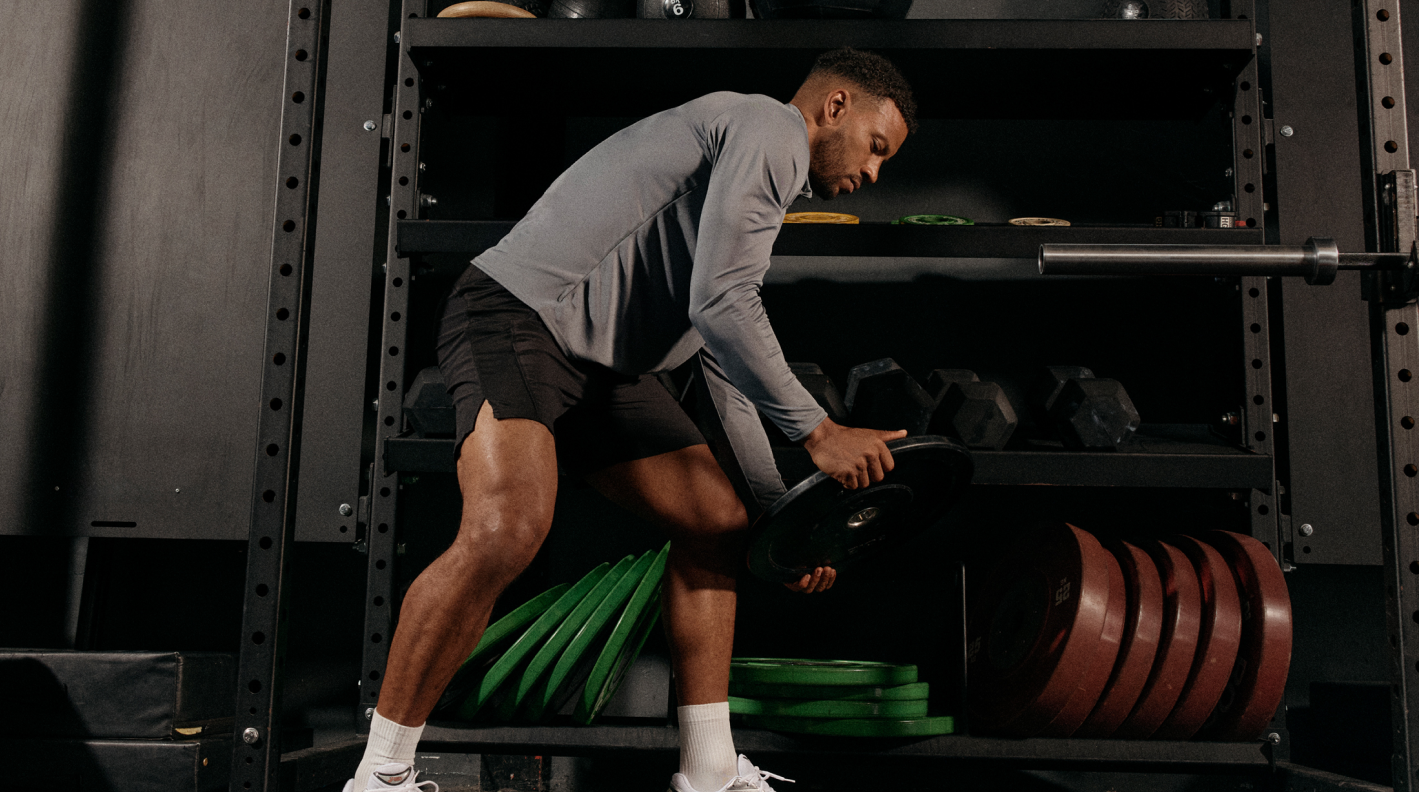
Key takeaways
- Delayed onset muscle soreness (DOMS) is common after intense workouts, caused by microscopic tears in muscle fibres. It peaks 24-48 hours post-exercise and typically eases after 3 days. DOMS is distinct from acute soreness felt during exercise, which subsides shortly after finishing.
- DOMS feels like widespread muscle aching or tightness, while injuries involve sharp, localised pain that may worsen over time and restrict movement. If movement exacerbates pain or swelling appears, it may indicate an injury that requires rest or medical attention.
- Engage in active recovery like walking or yoga to increase blood flow and reduce soreness. Target alternate muscle groups when sore, incorporate foam rolling, and focus on dynamic stretching during warm-ups. Adequate sleep, hydration, and an antioxidant-rich diet can also speed recovery.
If you’re embarking on a weight loss or body transformation journey, chances are you're trying to build an effective workout routine. From your cardio sessions to strength training, you know that to see results, you need to show up consistently at the gym.
But while day one of a fitness program might see you take to the dumbbells with the kind of steely-eyed focus you’d expect of Arnold Schwarzenegger at World Gym, 3 days in and it’s safe to say even rising from bed elicits a groan.
Your hamstrings are aching, you can barely lift your arms from the burn in your biceps, your glutes feel like they might detach from your body, and every footstep is stiff-legged and painful. Welcome to the inconvenience of sore muscles.
In fact, you’ve likely asked yourself: should I work out with sore muscles? The fact is, not all muscle soreness is created equal.
Knowing how to distinguish between delayed onset muscle soreness and the first signs of injury is crucial to ensure you maintain athleticism and avoid overtraining.
What causes muscle soreness after a workout?
If you experience muscle soreness a day or two after a workout, you’re not alone. This phenomenon is known as delayed onset muscle soreness (DOMS).
When you put your body under significant stress through high-intensity training or resistance, your muscle fibres experience tiny, microscopic tears — or a breakdown in muscle tissue. While this might sound alarming, muscle damage is actually a good thing.
These tears are necessary for your muscles to heal and adapt, ultimately getting stronger or bigger. In response to this damage, your immune system goes into cleanup mode, increasing inflammation in the area.
According to the American College of Sports Medicine, DOMS typically occurs at least 12 to 24 hours after a workout [1]. The pain tends to peak about 1 to 3 days after your session, at which point you can expect it to ease up.
The time frame for DOMS is important because it helps distinguish this soreness from acute muscle soreness, which is the burning sensation you might feel in a muscle during a workout.
This soreness is a result of the quick buildup of metabolites during intense exercise and will disappear as soon as or shortly after you stop exercising.
Should you work out with sore muscles?
So, it’s been 2 days since you pushed yourself in the gym, and you’ve woken up with muscles that feel tender to the touch, swollen, heavy, and fatigued.
Your quads are practically quivering and each step feels like you’re wading through mud with the effort it takes to force muscles into movement.
You might not be training for the Olympics or a competitive event, but you’re focused on your fitness and don’t want to skip the workout. Should you still work out with sore muscles?
It might seem counterintuitive, but working out with sore muscles can aid recovery and help flush out the metabolites (the byproducts of damage) more efficiently.
The key is working out in a manner that doesn’t place greater strain on your muscles but rather serves as a form of active recovery and getting blood moving through the affected area, as oxygenated blood can help the immune cells repair faster.
Light aerobic activity like walking, jogging or playing sports at a recreational pace can help relieve symptoms of DOMS and see you meet your exercise goals.
However, if you want to hit the gym for another high-intensity workout, it’s important to consider your range of movement.
While discomfort from muscle soreness can be expected, if the tightness experienced is impacting your form or hindering the full range of motion on a particular limb, then you should avoid any moves that over-exert that muscle.
For example, if your quads are so tight that you’re pitching forward when doing a squat, then don’t do a squat-heavy workout.
Soreness vs injury: How to tell the difference
Muscle soreness can be expected after a workout, even if you're in great shape. Suppose you’re increasing the resistance or trying a new move or workout that’s unfamiliar to your body.
In that case, you can expect to experience DOMS as your body begins to adapt to such changes.
Even so, navigating aches and pains can leave many wondering if it’s safe to keep working out or if it's the beginning of an injury. Here’s how to tell the difference.
1. Focus on the feeling
DOMS is typically experienced as muscles that feel achy, stiff, or tight.
They should feel tender and fatigued, possibly even burning, but this feeling can be attributed to a wide muscle group that you worked hard on during the session, e.g. the back of your legs after performing hamstring curls or your calves after running hill repeats.
In contrast, an injury is more of a sharp muscle pain that can be pinpointed to a specific spot.
With an injury, your normal functioning and movement may be limited, and you may experience sharp pain that’s deep and severe while performing certain tasks.
Significant swelling is also an indication injury has occurred and will be localised to the site of injury.
2. The pain isn’t easing
In the case of DOMS, soreness peaks around 24 to 48 hours post-activity and generally subsides after 3 days. In the case of an injury, the pain won’t have eased after 3 days and, in some instances, may have even become worse.
General soreness can be an indication that an injury is present so while active recovery helps relieve symptoms of DOMS faster, if you return to activity and the pain immediately returns or worsens, it serves to indicate an injury is apparent.
3. Consider when the pain first occurred
Acute injuries can happen immediately during exercise or build up gradually over days and weeks in the case of overuse injuries.
However, in the case of muscle soreness, it’s unlikely that you’ll experience pain or soreness during an exercise at all. Instead, you can expect to feel soreness within a few hours or up to 48 hours after an intense workout.
4. Monitor how you respond to movement
As mentioned above, muscle soreness responds well to active recovery and light aerobic exercise as oxygenated blood helps to flush out inflammation and aid recovery.
It’s for this reason that many use the phrase “motion is lotion” in reference to DOMS. With an injury, though, movement should exacerbate the pain. If gentle movement makes it feel worse, it’s more likely that you’re dealing with an injury.
Tips for working out with sore muscles
If you’re dealing with muscle soreness, you don’t have to give up the gym completely as you wait for the aches and tightness to subside.
Instead, switch up your training routine to ensure you’re staying active and moving but aren’t over-exerting the same muscle groups that are plagued with soreness.
Consider these training tips when dealing with sore muscles:
- Try active recovery workouts: Non-strenuous movement and light aerobic workouts can help increase the circulation of blood flow which reduces inflammation and helps minimise muscle soreness. As well as that, you’ll keep joints lubricated with non-strenuous movement [2]. Exercises like walking, mobility work, stretching, low-impact cycling, and yoga are all great ways to help the body actively recover from sore muscles and can be implemented into your exercise regimen.
- Befriend foam rollers: Stretching and soft tissue foam rolling after a hard workout can help alleviate muscle soreness and reduce inflammation. By applying light to moderate pressure on those parts of the body that are sore, you’ll help kickstart the recovery process and may help prevent DOMS [3].
- Work out alternate muscle groups: If you did an upper body session and are now experiencing DOMS, switch it up and train the legs with squats, deadlifts, and lunges which won’t see your form jeopardised due to sore arms. It’s a great tip when structuring your workout program and means you can tailor your sessions to accommodate this fatigue and soreness. For example, Tuesdays and Thursdays can be upper body sessions, while Wednesdays and Saturdays focus on legs.
How to relieve DOMS
Regardless of whether you push through a workout or not, you can speed up the recovery process from DOMS with these tips.
1. Warm up thoroughly
As with active recovery, warming up with dynamic stretching may help lessen DOMS as you move muscles and joints through a full range of motion.
This also allows your body to prepare for your next workout in a low-stress manner. Likewise, cooling down after a workout may help muscle recovery.
2. Prioritise sleep
When it comes to recovery, don’t overlook the importance of sleep. During sleep, the body is able to recover and repair, so it’s best to aim for at least 7 to 8 hours of sleep each night for adequate recovery.
3. Massage
According to a 2020 review, sports massages were found to have a small but significant effect on DOMS symptoms and overall range of motion [4].
It’s also been found to be the most effective method of reducing muscle soreness related to DOMS and perceived fatigue as it can improve blood flow to stress tissues and prevent fluid build-up in muscles.
4. Exercise different muscle groups
If you’re doing the same exercises every day, your muscles are going to become extremely fatigued and overused, while also struggling to recover from DOMS.
It’s important to take a sustainable approach to training and mix things up by focusing on different muscle groups throughout the week.
Be sure to opt for an upper/lower body split, where you alternative between upper and lower body moves every other day, and incorporate different exercises.
5. Train consistently
DOMS typically occurs either for those new to exercise or when implementing a new workout that the body isn’t familiar with. As a result, training consistently can help reduce the likelihood of DOMS as the body adjusts. and will help you work towards your weight loss and body transformation goals.
6. Take a cold bath
There’s a reason cold baths are all the rage right now. According to a 2019 study, a 10-minute partial-body immersion in 10-degree water may lessen DOMS [5].
Cold plunges and cryogenic treatments that use low temperatures are not surprisingly used by elite athletes and those looking to reach peak performance due to their enhanced recovery benefits.
7. Eat a balanced diet
According to a 2019 study, eating foods high in antioxidants, along with certain supplements, can help reduce the symptoms of DOMS and overall inflammation in the body [6].
According to the study, the best foods to consume are black currant extract, tart cherry juice, watermelon juice, pomegranate, ginger, and ginseng. Other supplements that help reduce DOMS symptoms include protein, branched-chain amino acids (BCAAs), and creatine.
If you’re exercising and experiencing muscle soreness, it’s best to reduce your intake of processed foods, sugar, and alcohol, all of which can increase inflammation.
If you’re wondering how you can plan your exercise routine to achieve a body transformation, meet Compound.
We’re dedicated to helping you live better, for longer. Our Body Transformation Programme combines medical treatments, prescriber support and personalised guidance to help you not just lose weight but completely transform your body and health for life.
- Breakthrough medication: Lose up to 21% of your body weight in 72 weeks with once-weekly, clinically proven treatment. It keeps you feeling fuller for longer, so eating less feels natural. Pair them with the Compound Code to lock results in for good.
- Compound Code: Our medication creates opportunity — Compound helps you seize it. Our proven system makes your treatment work harder. The Compound Code builds the muscle, energy, and fitness that medication alone can't deliver. Our holistic approach transforms not just how you look, but how you feel and function daily. So when you eventually finish treatment, your results don't disappear with it.
If you’re embarking on a weight loss or body transformation journey, chances are you're trying to build an effective workout routine. From your cardio sessions to strength training, you know that to see results, you need to show up consistently at the gym.
But while day one of a fitness program might see you take to the dumbbells with the kind of steely-eyed focus you’d expect of Arnold Schwarzenegger at World Gym, 3 days in and it’s safe to say even rising from bed elicits a groan.
Your hamstrings are aching, you can barely lift your arms from the burn in your biceps, your glutes feel like they might detach from your body, and every footstep is stiff-legged and painful. Welcome to the inconvenience of sore muscles.
In fact, you’ve likely asked yourself: should I work out with sore muscles? The fact is, not all muscle soreness is created equal.
Knowing how to distinguish between delayed onset muscle soreness and the first signs of injury is crucial to ensure you maintain athleticism and avoid overtraining.
What causes muscle soreness after a workout?
If you experience muscle soreness a day or two after a workout, you’re not alone. This phenomenon is known as delayed onset muscle soreness (DOMS).
When you put your body under significant stress through high-intensity training or resistance, your muscle fibres experience tiny, microscopic tears — or a breakdown in muscle tissue. While this might sound alarming, muscle damage is actually a good thing.
These tears are necessary for your muscles to heal and adapt, ultimately getting stronger or bigger. In response to this damage, your immune system goes into cleanup mode, increasing inflammation in the area.
According to the American College of Sports Medicine, DOMS typically occurs at least 12 to 24 hours after a workout [1]. The pain tends to peak about 1 to 3 days after your session, at which point you can expect it to ease up.
The time frame for DOMS is important because it helps distinguish this soreness from acute muscle soreness, which is the burning sensation you might feel in a muscle during a workout.
This soreness is a result of the quick buildup of metabolites during intense exercise and will disappear as soon as or shortly after you stop exercising.
Should you work out with sore muscles?
So, it’s been 2 days since you pushed yourself in the gym, and you’ve woken up with muscles that feel tender to the touch, swollen, heavy, and fatigued.
Your quads are practically quivering and each step feels like you’re wading through mud with the effort it takes to force muscles into movement.
You might not be training for the Olympics or a competitive event, but you’re focused on your fitness and don’t want to skip the workout. Should you still work out with sore muscles?
It might seem counterintuitive, but working out with sore muscles can aid recovery and help flush out the metabolites (the byproducts of damage) more efficiently.
The key is working out in a manner that doesn’t place greater strain on your muscles but rather serves as a form of active recovery and getting blood moving through the affected area, as oxygenated blood can help the immune cells repair faster.
Light aerobic activity like walking, jogging or playing sports at a recreational pace can help relieve symptoms of DOMS and see you meet your exercise goals.
However, if you want to hit the gym for another high-intensity workout, it’s important to consider your range of movement.
While discomfort from muscle soreness can be expected, if the tightness experienced is impacting your form or hindering the full range of motion on a particular limb, then you should avoid any moves that over-exert that muscle.
For example, if your quads are so tight that you’re pitching forward when doing a squat, then don’t do a squat-heavy workout.
Soreness vs injury: How to tell the difference
Muscle soreness can be expected after a workout, even if you're in great shape. Suppose you’re increasing the resistance or trying a new move or workout that’s unfamiliar to your body.
In that case, you can expect to experience DOMS as your body begins to adapt to such changes.
Even so, navigating aches and pains can leave many wondering if it’s safe to keep working out or if it's the beginning of an injury. Here’s how to tell the difference.
1. Focus on the feeling
DOMS is typically experienced as muscles that feel achy, stiff, or tight.
They should feel tender and fatigued, possibly even burning, but this feeling can be attributed to a wide muscle group that you worked hard on during the session, e.g. the back of your legs after performing hamstring curls or your calves after running hill repeats.
In contrast, an injury is more of a sharp muscle pain that can be pinpointed to a specific spot.
With an injury, your normal functioning and movement may be limited, and you may experience sharp pain that’s deep and severe while performing certain tasks.
Significant swelling is also an indication injury has occurred and will be localised to the site of injury.
2. The pain isn’t easing
In the case of DOMS, soreness peaks around 24 to 48 hours post-activity and generally subsides after 3 days. In the case of an injury, the pain won’t have eased after 3 days and, in some instances, may have even become worse.
General soreness can be an indication that an injury is present so while active recovery helps relieve symptoms of DOMS faster, if you return to activity and the pain immediately returns or worsens, it serves to indicate an injury is apparent.
3. Consider when the pain first occurred
Acute injuries can happen immediately during exercise or build up gradually over days and weeks in the case of overuse injuries.
However, in the case of muscle soreness, it’s unlikely that you’ll experience pain or soreness during an exercise at all. Instead, you can expect to feel soreness within a few hours or up to 48 hours after an intense workout.
4. Monitor how you respond to movement
As mentioned above, muscle soreness responds well to active recovery and light aerobic exercise as oxygenated blood helps to flush out inflammation and aid recovery.
It’s for this reason that many use the phrase “motion is lotion” in reference to DOMS. With an injury, though, movement should exacerbate the pain. If gentle movement makes it feel worse, it’s more likely that you’re dealing with an injury.
Tips for working out with sore muscles
If you’re dealing with muscle soreness, you don’t have to give up the gym completely as you wait for the aches and tightness to subside.
Instead, switch up your training routine to ensure you’re staying active and moving but aren’t over-exerting the same muscle groups that are plagued with soreness.
Consider these training tips when dealing with sore muscles:
- Try active recovery workouts: Non-strenuous movement and light aerobic workouts can help increase the circulation of blood flow which reduces inflammation and helps minimise muscle soreness. As well as that, you’ll keep joints lubricated with non-strenuous movement [2]. Exercises like walking, mobility work, stretching, low-impact cycling, and yoga are all great ways to help the body actively recover from sore muscles and can be implemented into your exercise regimen.
- Befriend foam rollers: Stretching and soft tissue foam rolling after a hard workout can help alleviate muscle soreness and reduce inflammation. By applying light to moderate pressure on those parts of the body that are sore, you’ll help kickstart the recovery process and may help prevent DOMS [3].
- Work out alternate muscle groups: If you did an upper body session and are now experiencing DOMS, switch it up and train the legs with squats, deadlifts, and lunges which won’t see your form jeopardised due to sore arms. It’s a great tip when structuring your workout program and means you can tailor your sessions to accommodate this fatigue and soreness. For example, Tuesdays and Thursdays can be upper body sessions, while Wednesdays and Saturdays focus on legs.
How to relieve DOMS
Regardless of whether you push through a workout or not, you can speed up the recovery process from DOMS with these tips.
1. Warm up thoroughly
As with active recovery, warming up with dynamic stretching may help lessen DOMS as you move muscles and joints through a full range of motion.
This also allows your body to prepare for your next workout in a low-stress manner. Likewise, cooling down after a workout may help muscle recovery.
2. Prioritise sleep
When it comes to recovery, don’t overlook the importance of sleep. During sleep, the body is able to recover and repair, so it’s best to aim for at least 7 to 8 hours of sleep each night for adequate recovery.
3. Massage
According to a 2020 review, sports massages were found to have a small but significant effect on DOMS symptoms and overall range of motion [4].
It’s also been found to be the most effective method of reducing muscle soreness related to DOMS and perceived fatigue as it can improve blood flow to stress tissues and prevent fluid build-up in muscles.
4. Exercise different muscle groups
If you’re doing the same exercises every day, your muscles are going to become extremely fatigued and overused, while also struggling to recover from DOMS.
It’s important to take a sustainable approach to training and mix things up by focusing on different muscle groups throughout the week.
Be sure to opt for an upper/lower body split, where you alternative between upper and lower body moves every other day, and incorporate different exercises.
5. Train consistently
DOMS typically occurs either for those new to exercise or when implementing a new workout that the body isn’t familiar with. As a result, training consistently can help reduce the likelihood of DOMS as the body adjusts. and will help you work towards your weight loss and body transformation goals.
6. Take a cold bath
There’s a reason cold baths are all the rage right now. According to a 2019 study, a 10-minute partial-body immersion in 10-degree water may lessen DOMS [5].
Cold plunges and cryogenic treatments that use low temperatures are not surprisingly used by elite athletes and those looking to reach peak performance due to their enhanced recovery benefits.
7. Eat a balanced diet
According to a 2019 study, eating foods high in antioxidants, along with certain supplements, can help reduce the symptoms of DOMS and overall inflammation in the body [6].
According to the study, the best foods to consume are black currant extract, tart cherry juice, watermelon juice, pomegranate, ginger, and ginseng. Other supplements that help reduce DOMS symptoms include protein, branched-chain amino acids (BCAAs), and creatine.
If you’re exercising and experiencing muscle soreness, it’s best to reduce your intake of processed foods, sugar, and alcohol, all of which can increase inflammation.
If you’re wondering how you can plan your exercise routine to achieve a body transformation, meet Compound.
We’re dedicated to helping you live better, for longer. Our Body Transformation Programme combines medical treatments, prescriber support and personalised guidance to help you not just lose weight but completely transform your body and health for life.
- Breakthrough medication: Lose up to 21% of your body weight in 72 weeks with once-weekly, clinically proven treatment. It keeps you feeling fuller for longer, so eating less feels natural. Pair them with the Compound Code to lock results in for good.
- Compound Code: Our medication creates opportunity — Compound helps you seize it. Our proven system makes your treatment work harder. The Compound Code builds the muscle, energy, and fitness that medication alone can't deliver. Our holistic approach transforms not just how you look, but how you feel and function daily. So when you eventually finish treatment, your results don't disappear with it.
- https://www.acsm.org/docs/default-source/files-for-resource-library/delayed-onset-muscle-soreness-(doms).pdf?sfvrsn=8f430e18_2
- https://www.onepeloton.com/blog/active-vs-passive-recovery/
- https://www.ncbi.nlm.nih.gov/pmc/articles/PMC7319325/
- https://www.ncbi.nlm.nih.gov/pmc/articles/PMC7228568/
- https://www.ncbi.nlm.nih.gov/pmc/articles/PMC7027844/
- https://www.ncbi.nlm.nih.gov/pmc/articles/PMC6323061/

